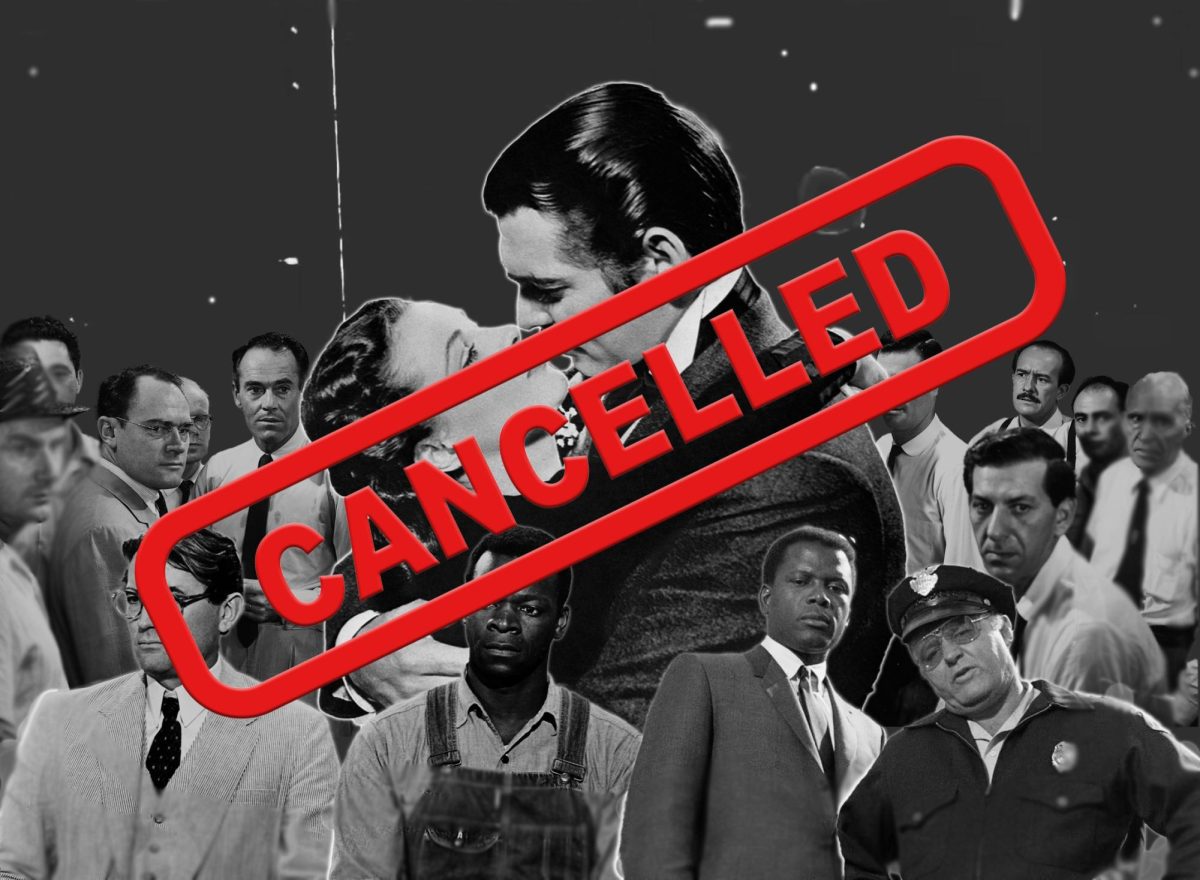From Kanye West to J.K. Rowling, cancel culture has become the norm of our generation. It is common for individuals, groups and corporations that make bigoted statements or claims to be disavowed by society, usually via social media.
The rise of cancel culture has influenced the censorship of numerous prominent political figures and celebrities. West and Rowling, for instance, have made insensitive statements against the Jewish and LGTBQ+ communities, leading them to get canceled.
Most age-old films have subversive messages that promote racism and sexism, but under no circumstances can they be canceled.
Many classic films released between 1900 and 1970 rely on what are, by today’s standards, outdated notions concerning race and sex. And yet, these movies – like “The Searchers,” where John Wayne’s character mistreats Native Americans, and “The Jazz Singer,” where Al Jolson uses blackface to portray an African-American musician – are still available to watch today via streaming platforms.
Over three-and-a-half hours long, the 1939 film “Gone With the Wind” covers the tumultuous adult life of Scarlett O’Hara (Vivien Leigh) as she navigates her complicated romances and ultimately grows into an independent young woman.
The film’s controversies, however, don’t concern the main plotline. Rather, the main issues are the film’s setting and subversive messaging. “Gone With the Wind” takes place in the American South before, during and after the Civil War. As such, the film has been heavily criticized for upholding the Old South and supporting the notion of the Lost Cause – a historical myth that attempts to sugarcoat slavery and justify the South’s secession and resistance to postwar Reconstruction.
This narrative was developed by former Confederate soldiers, generals and sympathizers shortly after the Civil War ended in 1864. It began to spread and take root in the mindset of the U.S. as a whole, erasing the Civil War’s main purpose of ending slavery until it became the dominant interpretation of the event in the early 20th century.
Viewing the film today, it’s not difficult to see why the arguments for canceling this movie are completely valid. Many scenes within the movie depict slaves picking cotton in the fields, singing happily as if they were enjoying their work. O’Hara’s slaves are joyfully loyal to her, even promising to prevent General Sherman’s invasion of Atlanta if they could. And as O’Hara’s character slowly progresses and becomes more proactive, she, angry at one of her slaves, punches them in an effort to send the enslaved woman out on her errand.
These moments, and many more, make “Gone With the Wind” extremely difficult to watch at times.
This isn’t an isolated incident, either. A plethora of classic films express some form of racism, sexism or just downright bigotry. “Breakfast at Tiffany’s,” for example, features a stereotypical Asian character played by Mickey Rooney for comedic purposes, and “Seven Brides for Seven Brothers” has seven brothers kidnap seven women to take as brides.
Some aspects of cancel culture are occasionally useful. It allows minorities to express disapproval of offensive stereotypes and language that have been perpetuated by the media for years, if not generations.
However, to cancel certain classic films because of their uncomfortable messages would not do anyone any favors. As a society, we need to acknowledge the problems these films present, not bury them in deliberate ignorance. It is because we are confronted with such brazen, normalized displays of racism and sexism that we are able to recognize them for what they truly are and move forward with change as a society.
In fact, it is this very objective that caused an overall shift in films during the ‘50s and ‘60s, as they began to focus on the social issues of the time period.
“To Kill a Mockingbird” and “In the Heat of the Night” both tackle the stubborn prominence of racism in the Jim Crow South. “12 Angry Men” tells the story of how one man, Juror number eight, is able to overturn the prejudices and logical biases of the 11 other jurors in a murder trial. And yes, while it does positively promote the Lost Cause to a nauseating degree, “Gone With the Wind” features a strong female protagonist as a representation of the image of liberated woman that was beginning to appear during the 1930s.
It is these classic films that are praised by audiences and critics today. Not those that went along entirely with the societal bigotry of the day, like B-list movies along the lines of “Bride of the Gorilla” and “Annie Get Your Gun,” but instead those that spoke up against it and became a model for society to follow even generations later.
The abridged version of this article appeared in the Fall 2023 print edition. This is an uncut version.



